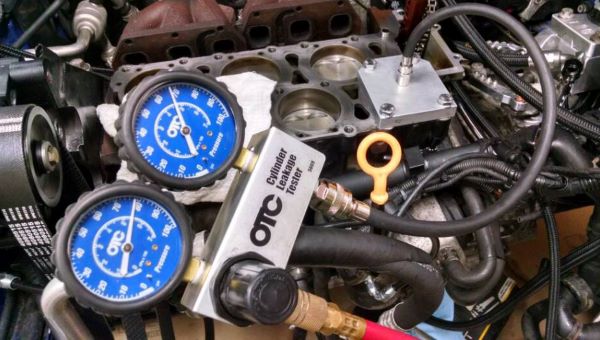Cylinder leakage test
A cylinder leakage test is used to determine the condition of the cylinder seal. Before the test, the engine is warmed up so that the engine oil can perform sealing in the cylinder. Then loosen the spark plugs by one revolution and start the engine to run for about 15 seconds at 1500 rpm. This removes soot deposits from the spark plug that can fall off during removal and get stuck between the valve and the valve seat, keeping the valve open and causing a false reading during the test.
Cylinder leakage test
For testing, the spark plug of the tested cylinder and the spark plugs of the adjacent cylinders are removed. Testing is performed when the piston is in the TDC position (top dead center) in the compression stroke. A plastic straw is inserted into the opening of the spark plug without fear of damaging the piston during adjustment. By turning the crankshaft, the piston is brought to TDC using a straw. After positioning the piston, we will not know whether it is a compression or exhaust stroke until testing is started. If it is in the exhaust stroke and the compressed air goes through the exhaust pipe, turn the engine one crankshaft and repeat the test.
In order for the testing to be successful, it is necessary for the piston, connecting rod, and camshaft to be in perfect alignment. Otherwise, the pressure on the piston from the leak tester will push the piston down and turn the crankshaft. If this happens, the intake or exhaust valve will open. Depending on how the piston ends by turning the crankshaft, and we will have a failed test.
Before testing, the filter housing, engine oil dipstick, and radiator cap (ie coolant tank) are removed. When the cylinder is under air pressure, it is necessary to perform a leak test by listening to the flow of air from the exhaust pipe, crankcase, cooling system, and engine seals.
To perform cylinder leakage test, follow these steps:






